CHC HELICOPTER
The Department of National Defence (DND) does an excellent job of providing Search and Rescue (SAR)
to over 18 million square kilometers of Canada’s search and rescue regions. The current delivery of SAR is tasked
primarily to the RCAF (Royal Canadian Air Force) by way of fixed-wing aircraft like the CC-130 Hercules and the CC-115 Buffalo aircraft as well as
rotary wing assets consisting of the CH-146 Griffon and the long-range CH-149 Cormorant which are integral
to the search and rescue effort and also for transporting survivors to safety.
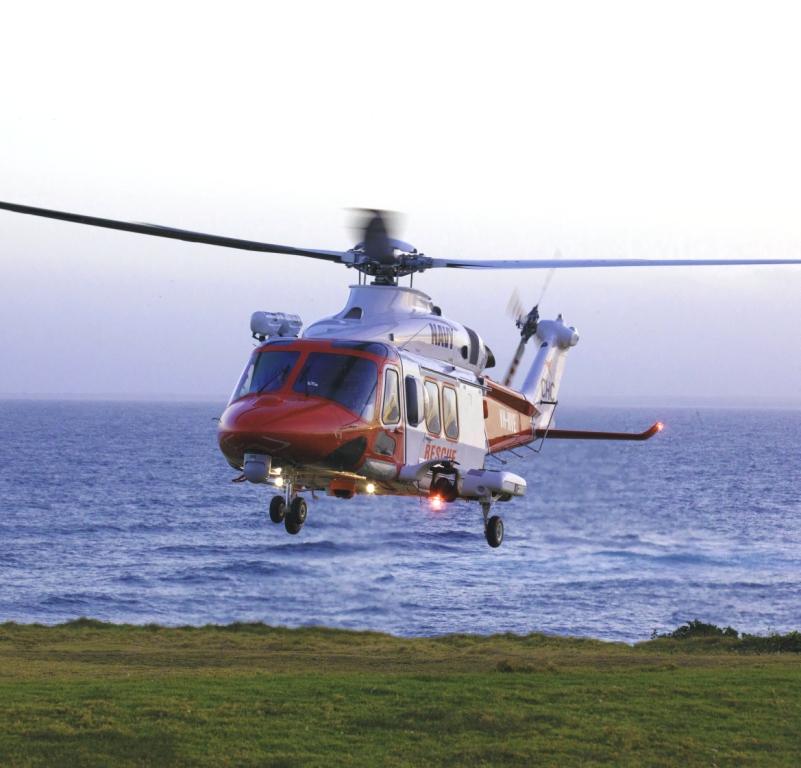
SAR coverage in the Great Lakes region of Canada is currently provided by the CH-146 Griffon, a medium category helicopter which operates from CFB Trenton. While it is a proficient combat support and MEDEVAC aircraft, most agree that it is not the optimum platform for this role, particularly when operating over water.
Also, there is an increased need for SAR coverage in Canada’s North and Arctic regions to cover the increased levels of tourism and new shipping activity in the Northwest Passage. The fact is many remote communities in this region could benefit from helicopter Emergency Medical Service (EMS) with a secondary SAR service.
So, to improve SAR service across Canada, DND has plans to undertake a CH-149 Cormorant Mid-Life Upgrade (CMLU) program but CMLU will necessitate taking aircraft out of front-line service for extended periods, thus potentially creating a coverage gap in SAR availability across the country.
The CMLU proposal by Team Cormorant will involve the upgrading of VH-71 Kestrel aircraft that are currently being warehoused, to the current CH-149 Cormorant standard. If exercised, this option would allow the RCAF to expand its SAR helicopter fleet and repopulate CFB Trenton with the Cormorant for SAR duty.
A POTENTIAL CAPABILITY GAP IN CANADIAN SAR
To address a potential capability gap in SAR during this upgrade program, CHC Helicopter Canada is prepared to deliver an interim SAR capability until the Cormorant aircraft have been modified and are back to operational status.
At the Paris Air Show this year, CDR was able to sit down with Mick Fry, Director of International Sales for SAR/EMS at CHC Helicopter and he explained what his company is looking to do in Canada, “The Cormorant MLU is scheduled to take place within the next 2 years, and as yet there is no green light for what will be an extensive and lengthy upgrade program. We believe there is an inherent danger that the VH-71 upgrade process could fail to meet the timeline for the CH-149 MLU with a resultant risk of project slippage, delays and reduced coverage. This could require an additional budget allocation to fast-track the project.”
Fry went on to describe the solution his company is offering, “CHC Helicopters Canada would be able to bridge this gap, which would allow DND to upgrade the Cormorant and the VH-71, bringing them into service in an ordered manner and allowing crews to be trained. It would allow for IOC [Initial Operational Capability] to be declared before handing back the task to the expanded Cormorant fleet. We feel that based on experiences in other jurisdictions, we believe a 5 year contract plus a 1 year extension to allow for delays would provide both a robust gap SAR solution, and breathing space for the RCAF to reset and expand for the next 20-30 years.”
To be clear, CHC Helicopters is not positioning itself to replace DND in the provision of SAR services, rather it seeks to ensure Canada maintains its SAR coverage across the country, and perhaps deliver more capability than one might expect during the CMLU program.
Fry explained, “We offer to provide capability under DND control, to fill specific and temporary gaps, and to enhance coverage or free up resources. We also fully recognize the need to maintain a visible presence so our aircraft could be badged as RCAF aircraft as per a contracted agreement.”
THE BENEFITS OF ALTERNATE SERVICE DELIVERY 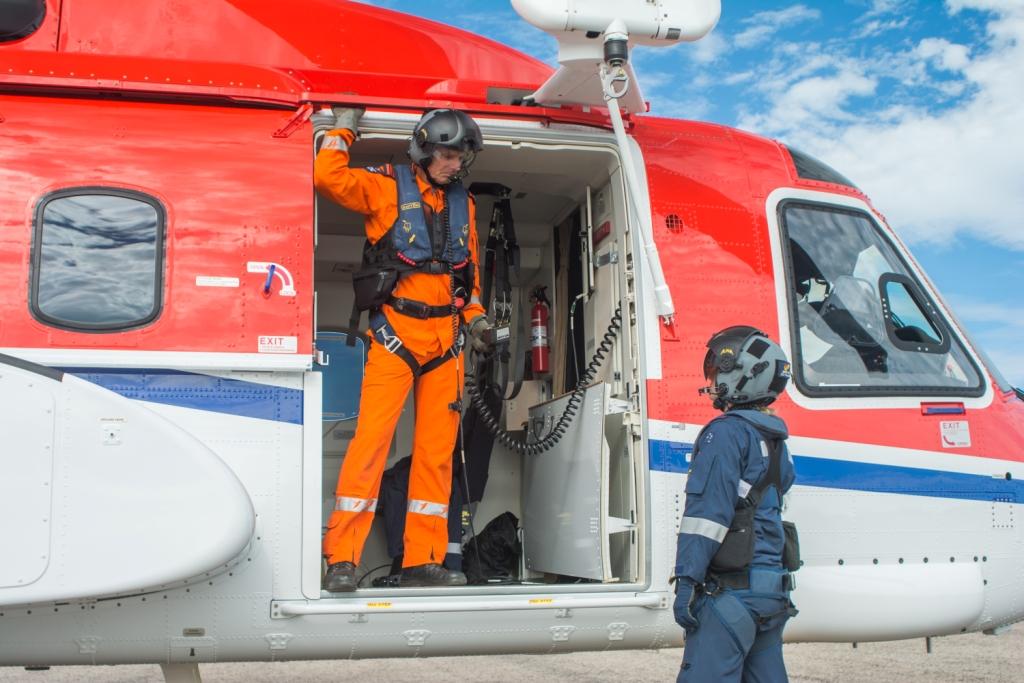
Supplementing government service provisions with an Alternate Service Delivery (ASD) model is driven by a need to either update technology, bridge a specific gap in coverage, or to mitigate capital expenditure (CapEx) and operating expenditure (OpEx) challenges by harnessing the flexibility and innovation of the commercial sector.
A commercial provision is usually provided through a turnkey arrangement, controlled by local government and ‘badged’ under the relevant agency in a transparent and auditable manner while maintaining the ethos and core identity of the contracting agency. This is facilitated through seamless integration which is imperceptible at the point of delivery.
With the benefit of 30 years’ experience in operating ASD models for both federal and regional SAR provision, CHC Helicopter believes it has the ability to leverage advances in capability and to field new and efficient technologies in a timely manner. With its core focus of helicopter operations, commercial providers like CHC can apply lessons learned in their current operations to increase efficiency, and leverage its long term relationship with a training partner. In CHC’s case, the company has a global partnership with CAE, which provides an efficient and sustainable pipeline of suitably trained and experienced personnel.
A GLOBAL PARTNERSHIP WITH CAE
CHC also has agile supply chain management and a dynamic global distribution network. This ensures resilience in spare part availability with the key aim of supporting exceptional levels of service availability approaching 100%. The company also has the flexibility to field a modern and highly capable service, with high availability, and without a large CapEx burden or front-loaded project cost. All the component elements of an ASD are designed to provide a high quality all-weather service at exceptional levels of availability; typically against a contracted 24/7 availability rate of 98%.
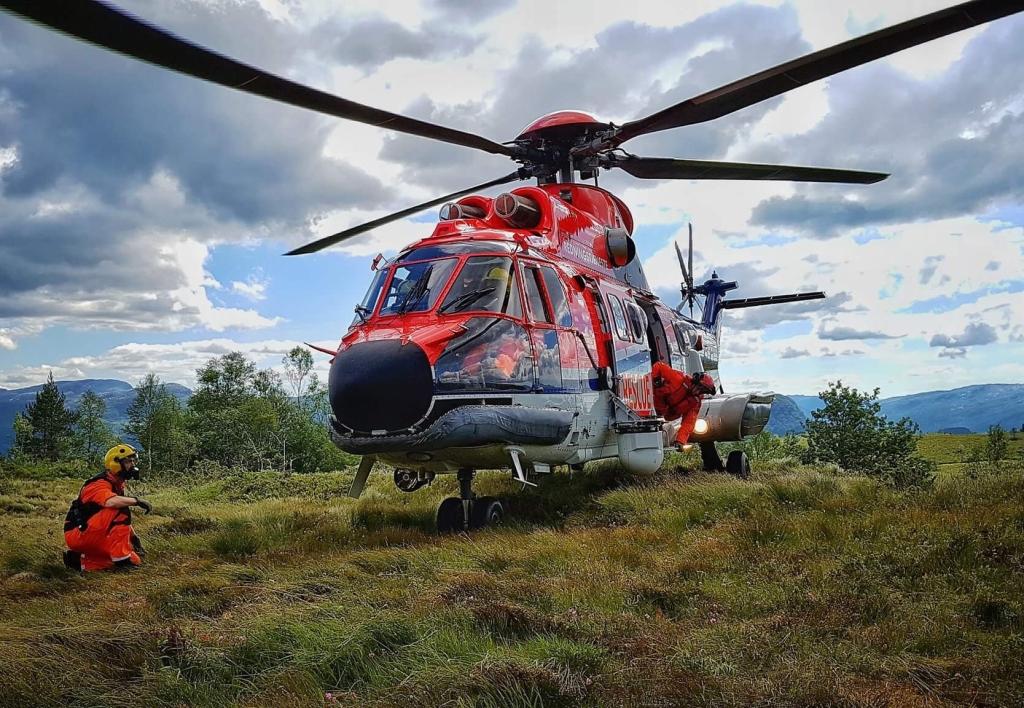 Experience has repeatedly shown that a comprehensive requirements document is a pivotal component in ensuring long term success for Alternative Service Delivery. These requirements are devolved from ICAO/IMO guidelines and ensure compliance with global standards of provision.
Experience has repeatedly shown that a comprehensive requirements document is a pivotal component in ensuring long term success for Alternative Service Delivery. These requirements are devolved from ICAO/IMO guidelines and ensure compliance with global standards of provision.
As CHC explained to CDR, “Once the requirements are defined, successful execution by the commercial provider should be auditable across all aspects and against a well-defined and agreed upon set of Key Performance Indicators (KPIs). Total and complete transparency is essential to any successful relationship between a government agency and commercial provider. In order to provide contract managers and stakeholders with full and unrestricted visibility of performance, CHC has adopted and implemented innovative analytics software that allow performance against objective KPIs to be accessed at any time by government stakeholders or contract management departments.”
Past experience in successfully delivering an Alternative Service Delivery model has identified the importance of clearly defining the parameters and requirements and the CHC Group has a clear mission statement in this regard: ‘to provide serviceable airborne systems with trained crews at the required readiness’.
That mission statement is precisely aligned with CHC’s experience in providing SAR services around the globe over the past 30 years, and is the cornerstone of its service delivery model as all of its operations fall under the ultimate control of both national and regional rescue Coordination Centres (RCC’s), thereby enabling coordination at all levels.
SEAMLESS INTEGRATION
CHC’s SAR operating procedures have been developed in accordance with the principles outlined in the International Aeronautical & Maritime Search & Rescue (IAMSAR) doctrine to ensure interoperability and seamless integration with existing government provisions. The IAMSAR manual is issued by the International Maritime organization to assist nations in meeting both their own SAR requirements and complying with International Civil Aviation Organization / International Maritime Organization (ICAO/IMO) conventions on Safety of Life at Sea (SOLAS).
“As SAR providers, our crews and support personnel exercise, train and collaborate with all stakeholder agencies on a daily basis. Examples include the RNLI [Royal National Lifeboat Institution], and Police and Ground SAR teams in UK, Ireland, Norway and Australia,” said CHC’s Fry.
CHC has extensive expertise in the area of SAR delivery through long running contracts for high-profile customers, departments and organizations. The company also has well established relationships with helicopter OEMs and this allows for streamlined procurement/acquisition cycles of Commercial Off-the-Shelf (COTS) aircraft and components which maximize cost benefits and reduce lead times.
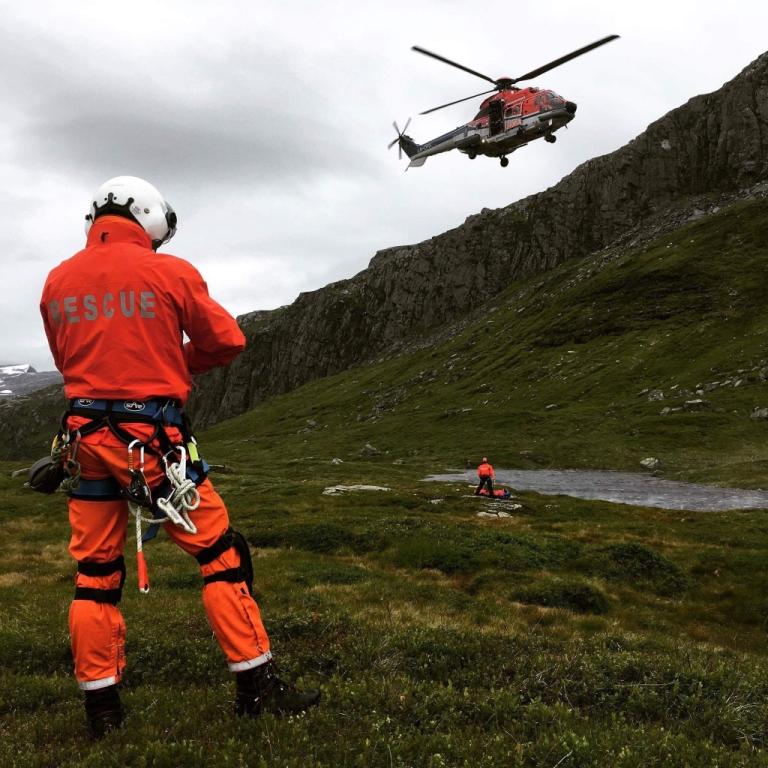 CHC says it’s proud to work with customers to provide ASD solutions that best fit their needs, and its global fleet of medium and heavy rotorcraft include some of the most technically advanced helicopters in the world, including: Leonardo AW139; Airbus EC135/145/155; Airbus AS332; Airbus AS365 (N Series); Bell 412; Sikorsky S-76 (A and C Series); and the Sikorsky S-92.
CHC says it’s proud to work with customers to provide ASD solutions that best fit their needs, and its global fleet of medium and heavy rotorcraft include some of the most technically advanced helicopters in the world, including: Leonardo AW139; Airbus EC135/145/155; Airbus AS332; Airbus AS365 (N Series); Bell 412; Sikorsky S-76 (A and C Series); and the Sikorsky S-92.
CHC is providing SAR helicopters and service delivery to the Irish Coast Guard which has been under an ASD model since 1991; this included a technology upgrade to the Sikorsky S-92A beginning in 2013.
A KEY PLAYER IN COMMERCIALIZATION OF SAR
In Norway, SAR is under military ownership and is supplemented in key areas by commercial provision operating in support of the Oil & Gas sector, including offshore operations in the Arctic Circle. A delayed delivery of the AW101 aircraft in Norway created an SAR coverage gap, which is currently being filled by CHC Group on behalf of the Norwegian Ministry of Justice.
Helicopter support for United Kingdom SAR has been under a mix of military and Coast Guard provision, including partial commercialization in 2007 to bridge coverage gaps before moving to full commercial provision of SAR in 2015 and CHC has been a key player in this transition.
In Australia, a multi-state SAR provision has been provided by CHC since 1989. The company provides SAR coverage primarily for military fast jet operations across 7 bases, as well as support for local and remote communities. The CHC Group has also provided secondary SAR provision to both the states of New South Wales and Western Australia under State Government EMS contracts.
The CHC Group has also supported the offshore Oil and Gas community with SAR provision in support of remote operations for many years. Most of these operations have involved setting up an SAR service in challenging regions such as the Falkland Islands, Norway, Australia, Tanzania, Kazakhstan and Uruguay.
Ian McLuskie is Senior Manager at CHC Helicopter and for this report he told CDR, “Over the years we have introduced aircraft like the Airbus Helicopter H225 into the all-weather SAR role, the S-92, and the AW139, so we have a lot of corporate knowledge and experience.”
He explained, “Our main aim is to provide full search and rescue service - that’s the aircraft, the trained crew, and a high level of availability that meets the requirements. On our contracts we regularly achieve 98% availability. For Canada we believe our SAR configured S-92 aircraft would be the best fit to deliver service while the Cormorant is being upgraded.”
S-92 THE BEST FIT FOR CANADA
As we’ve already said, the Royal Australian Air Force has relied on CHC Helicopter for nearly 30 years to support and provide its immediate response to aircraft emergencies within its jet fighter community. While ejections are now thankfully rare, the ongoing emergency response capability of the wider Australian Defence Force (ADF) community has grown with the introduction of more aircraft types, and has therefore become significantly more complex.
In its latest contract with the ADF, CHC Helicopter is tasked with providing the essential air element to a demanding model of Crash Rescue that together with Specialist SAR operator OPSTAR, provides a best practice rapid response to the Royal Australian Navy’s Air Base in Nowra, New South Wales, Australia.
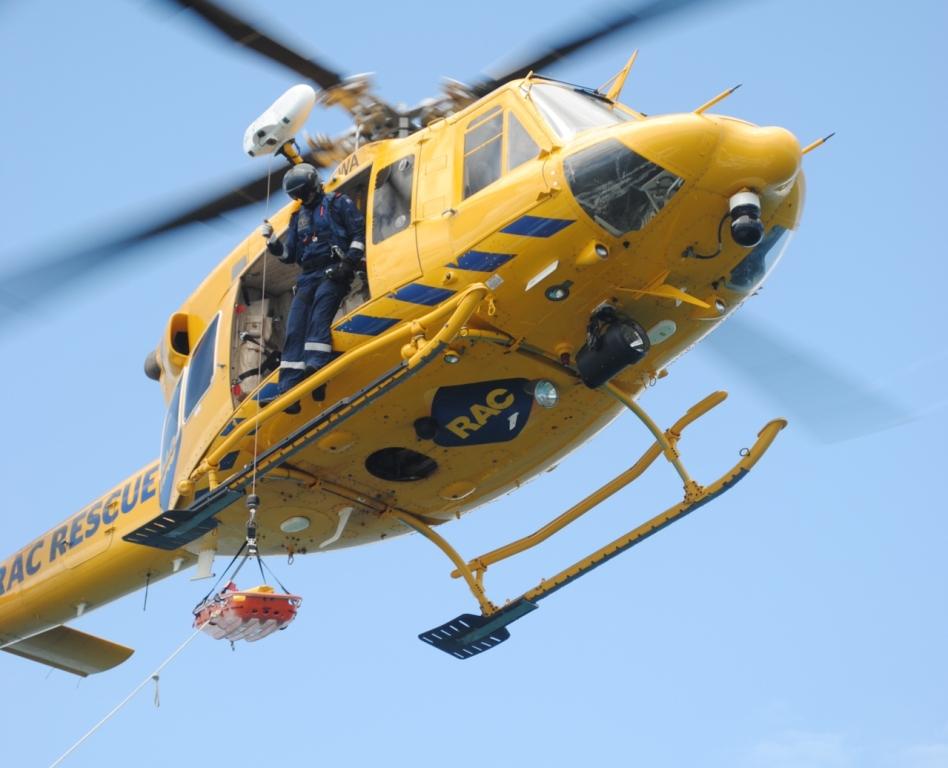 Located two hours south of Sydney, the Royal Australian Navy’s Fleet Air Arm operates a range of combat and training helicopters, over remote wilderness areas of vast national parks and into the Tasman Sea to ranges of over 100 nautical miles. These activities occur year round, in day and night and in the extreme weather conditions which Australia is capable of dishing out. The task is a tough one; monitor all flying and parachute operations, detect an incident and respond in order to locate, access, extricate and provide professional pre-hospital care to casualties within 60 minutes of receiving a call.
Located two hours south of Sydney, the Royal Australian Navy’s Fleet Air Arm operates a range of combat and training helicopters, over remote wilderness areas of vast national parks and into the Tasman Sea to ranges of over 100 nautical miles. These activities occur year round, in day and night and in the extreme weather conditions which Australia is capable of dishing out. The task is a tough one; monitor all flying and parachute operations, detect an incident and respond in order to locate, access, extricate and provide professional pre-hospital care to casualties within 60 minutes of receiving a call.
Whether it’s a ditching or a crash in a remote area, the CHC AW139, fitted with Night Vision Imaging System (NVIS), Forward Looking Infrared (FLIR) multi-frequency beacon homing, dual hoist system and night auto hover; must be airborne with its specialist team within 10 minutes of an incident.
The Naval Air Stations Airfield Commander, Lieutenant Commander Richard Neville explained to CDR, “The SAR model is one designed for high risk operations and provides a capability brick that works in all operational environments.” Regardless of the time of day or the day of the week, OPSTAR provides a specialist on ground and an in-field capability with uniquely skilled, experienced and equipped operators. The tasks range from rescuing Army parachutists suspended in trees, to the rescuing of aircrew from a downed aircraft (who could be trapped and surrounded by all of the hazardous materials and explosive ordnance carried in modern combat machines).
EXCEPTIONAL LEVEL OF AVAILABILITY
A large part of this capability is dedicated to over-water recoveries where the Tasman Sea can provide the worst of conditions, equivalent in some respects to those found in the North Pacific and North Atlantic. It’s in these conditions in particular that CHC provides the air element that has proven exceptional availability and crew skills, delivering an effective response in these most challenging of conditions.
What makes the CHC / OPSTAR collaboration so unique is that both of these organizations work as one team, and yet they are both independently contracted to the Australian Defence Forces with no commercial agreement between them. “It’s a great sign of their professionalism,” said LCdr Neville.
CHC Helicopters now provides SAR and Crash Rescue services to all three arms of the Australian Defence Force. The latest contract with the Navy, while only in operation since April this year, is starting to gain the attention of other emergency response organizations as the multi-disciplinary team has met exceptional capability milestones in a very short operating period.
According to the Royal Australian Navy, the team is also occasionally borrowed by other rescue authorities, thereby proving their flexibility. This “arranged marriage of CHC Helicopter and OPSTAR,” as CEO of OPSTAR John Giffard explains, “… recognizes that the fundamental elements of a military SAR response are equally as effective in a civilian emergency. Our focus on our own areas of responsibility whilst operating as part of a much larger team has proven to be a winning combination in both military and civilian emergency response that can be relied upon anywhere, anytime.”
 of CHC Helicopter - from Joetey Attariwala.JPG)
We already know the company is eager to provide an SAR service to Canada while the RCAF upgrades the CH-149 Cormorant fleet (thereby providing DND with risk-mitigation during the modernization program) and based on what we have learned in preparing this report, we expect its proposal will be given very serious consideration.

